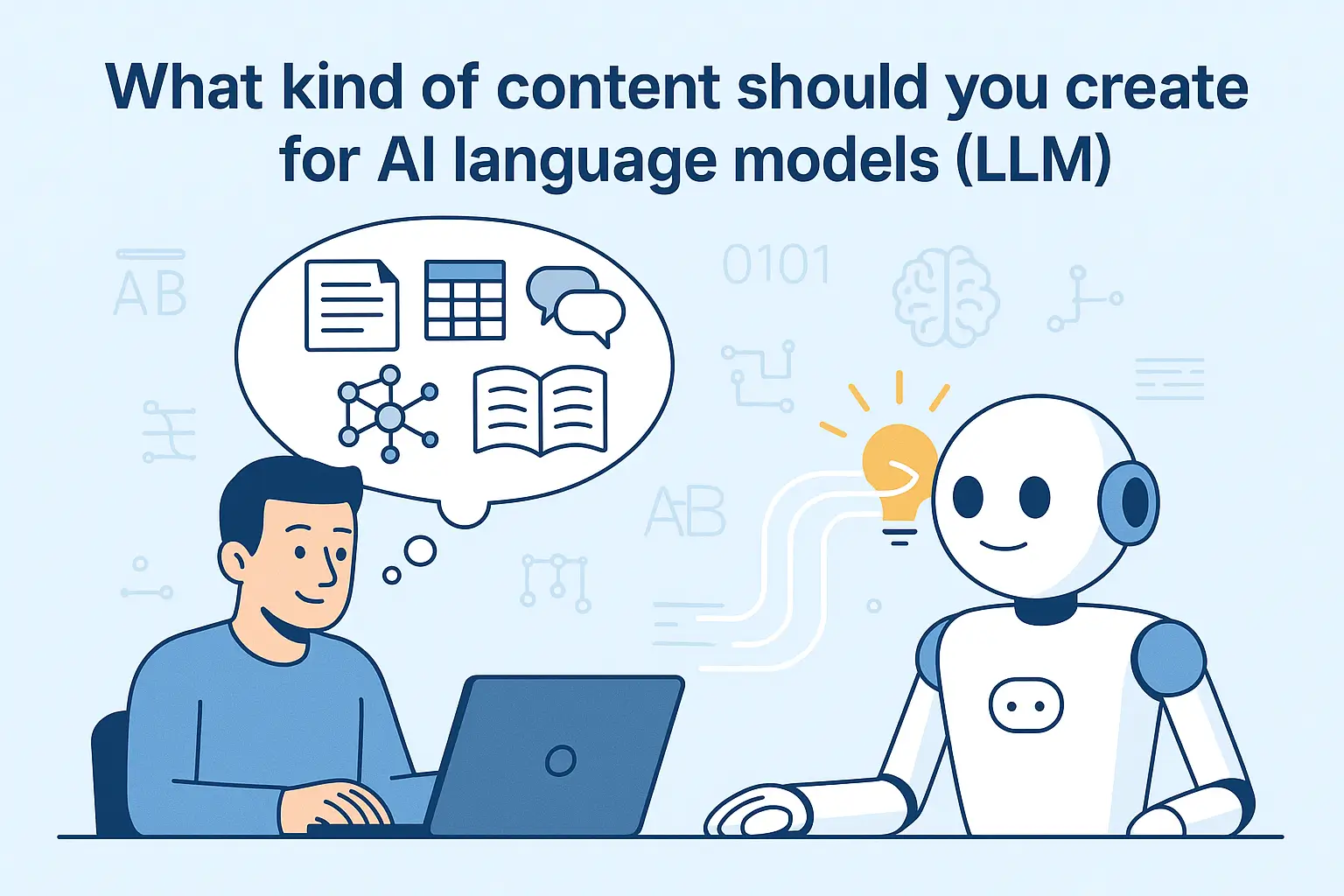What kind of content should you create for AI language models (LLM)?

Modern language models like ChatGPT, Claude, and Gemini rely heavily on the content available online. While they're trained on vast datasets, it's the fresh, well-structured, and relevant information found on the web that helps them stay accurate and useful. At the same time, the share of traffic coming from AI agents—intelligent systems that search, compare, and act on behalf of users—is growing rapidly.
For businesses, content creators, and brands, this is a major shift. AI is no longer just a tool; it's quickly becoming a gatekeeper. It decides what content users see, which sources are trustworthy, and which brands to recommend. That's why it's more important than ever to create content that is not only helpful for humans but also easy for AI to find, understand, and use.
AEO is the New SEO
Traditional SEO focused on pushing a website to the top of Google results. But AI has changed that. Many users no longer see a list of links. They get a direct answer, often generated by a system like ChatGPT or Gemini. This is where AEO, or Answer Engine Optimization, comes in.
AEO is about structuring your content so that it can serve as a precise, trustworthy answer to a specific question. Bullet points, subheadings, FAQs, and concise summaries make it easier for AI to understand and reuse your content. It's no longer just about keywords. Now it's about clarity and relevance.
Content that directly responds to real user questions is more likely to be used in AI answers and recommendations.
AI Understands Meaning, Not Just Words
Unlike traditional search engines that match phrases, language models rely on semantic understanding. They turn text into vectors, which are mathematical representations of meaning. When a user asks something, the system looks for content with similar meaning, not just similar wording.
This means that keyword stuffing is outdated. What matters now is matching intent. Write clearly. Focus on specific problems and how to solve them. Use headings that reflect real questions. Provide value in each section, not fluff.
Well-structured content that delivers insights is easier for AI to parse, summarize, and reuse in conversations with users.
Keep Your Content Fresh and Available
Even though AI models contain large amounts of built-in knowledge, they are often trained months or years before being used. To stay current, many systems use a method called Retrieval Augmented Generation (RAG). It allows them to pull fresh data from external sources like websites and product databases.
If your content is outdated or hard to access, AI may skip it. Make sure your site is fast, readable, and updated regularly. Use proper HTML structure and submit sitemaps. Publish accurate product info, service pages, and articles that reflect the latest developments in your field.By staying current and technically clean, you increase your chances of being quoted or linked by AI.
Trust and Expertise Still Matter
Google's E-E-A-T framework—Experience, Expertise, Authoritativeness, and Trustworthiness—has become more important than ever. AI systems want to avoid giving bad advice. They try to rely on credible, expert-backed sources.
This is especially important in sensitive topics like health, money, or legal issues. Make sure your content is signed by real people. Add author bios and credentials. Link to sources. Build a track record that shows you're a legitimate expert in your field.
Content that looks safe and reliable will rank higher, not only in search engines but also in AI-generated responses.
AI Agents Are Changing How Decisions Are Made
AI agents like ChatGPT with plugins, Microsoft Copilot, or Gemini Advanced are designed to do more than just search. They help users compare products, read reviews, analyze prices, and even take action like booking a service or completing a purchase.
Your content should support that. Use clear product descriptions, detailed comparisons, updated pricing, and rich snippets that help AI understand what you offer. Avoid jargon. Focus on clarity and structure.
The more accessible your data is, the more likely AI agents will choose your content to support a user's decision-making process.
Top tips for Creating AI-Ready Content
To align your content with this new ecosystem, here are some practical steps:
- Focus on real user questions and intent
- Use headings, lists, and short paragraphs
- Keep information accurate and up to date
- Include author information and expert insights
- Break content into useful, structured blocks
- Think about answers first, then go into detail
We are moving into a future where your visibility depends not just on ranking in Google, but on being used by AI to answer questions and guide decisions. The traffic from AI agents will grow, and so will their influence on what users see and trust.
If your content is well-written, updated, and credible, you have a strong chance of being part of this new ecosystem. It's no longer just about being seen by search engines. It's about being understood and used by machines that represent your next customers.
You may also be interested in:
ChatGPT Atlas – a new browser that could change the way we use the internet
OpenAI introduces ChatGPT Atlas, a revolutionary browser that deeply integrates AI into web browsing. Learn about its key features and what it means for the future of search and brand visibility.
Why Your SEO Dashboard is Incomplete Without LLM Visibility Data
Discover why traditional SEO metrics are no longer enough and how LLM visibility data is becoming crucial for complete digital marketing success in the AI era.
What is Answer Engine Optimization? AEO vs GEO vs SEO
Learn the differences between Answer Engine Optimization (AEO), Generative Engine Optimization (GEO), and Search Engine Optimization (SEO), and how to optimize your content for all three strategies.